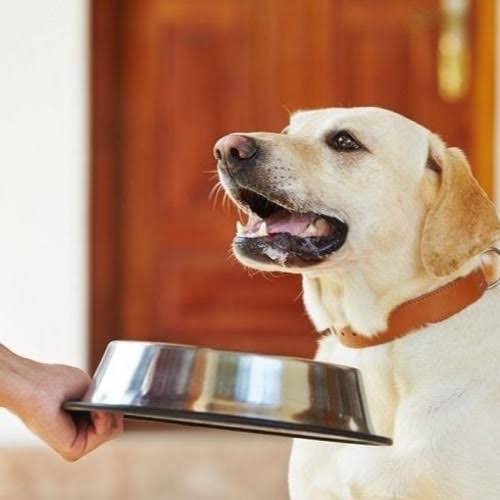
Choosing the right dog food is one of the most important decisions a pet owner can make to ensure their dog’s overall health and well-being. Grain-free dog food has grown in popularity in recent years, especially for dogs with certain sensitivities.
However, with so many options available on the market, selecting the best grain-free dog food for your pet’s specific needs can be a challenging task.

How to Choose the Best Grain-Free Dog Food for Your Dog’s Needs
1. Understand What Grain-Free Dog Food Means
Grain-free dog food refers to formulations that do not include common grains like wheat, corn, or soy. Instead, these foods often substitute grains with high-quality protein sources and vegetables like sweet potatoes, peas, and lentils. Some of the key ingredients in grain-free dog food are typically:
- Animal-based proteins (chicken, turkey, beef, lamb, etc.)
- Vegetables (sweet potatoes, peas, carrots, etc.)
- Fruits (apples, blueberries, cranberries, etc.)
- Healthy fats (salmon oil, chicken fat, etc.)
Many dog owners opt for grain-free diets when their pets exhibit signs of food allergies, digestive issues, or sensitivities to grains. However, it’s essential to recognize that grain-free doesn’t automatically mean the food is the best for your dog. It’s about tailoring the diet to your pet’s unique needs.
2. Assess Your Dog’s Health Requirements
Before switching to grain-free food, consider your dog’s age, size, breed, and health condition.
- Age and Life Stage: Puppies, adult dogs, and senior dogs have different nutritional needs. Puppies require more protein and fat for growth, while senior dogs may need a lower-calorie diet to prevent obesity. Make sure to choose grain-free options that match your dog’s life stage.
- Allergies and Sensitivities: Some dogs have food allergies or sensitivities to grains. Symptoms of food allergies can include itchy skin, ear infections, gastrointestinal issues, and vomiting. If your dog has been diagnosed with a grain allergy, grain-free food may be a good option. However, if your dog is not allergic to grains, a grain-inclusive diet may still be more beneficial.
- Digestive Health: If your dog has digestive issues like bloating, diarrhea, or constipation, a grain-free diet may help ease some of these problems. Grains like wheat and corn can be difficult for some dogs to digest, especially if they have sensitivities.
- Weight Management: Some grain-free dog foods may contain higher levels of protein and fat, making them a good option for active or working dogs. However, they may not be ideal for less active dogs, as high protein and fat content can lead to weight gain.
3. Check for Balanced Nutrition
While selecting grain-free food, it’s essential to ensure that the food meets all your dog’s nutritional needs. The best dog food, whether grain-inclusive or grain-free, should include:
- High-quality protein: Proteins should come from animal sources such as chicken, lamb, or salmon, which provide essential amino acids for muscle development and overall health.
- Omega fatty acids: These are vital for healthy skin and coat, as well as for promoting cognitive function.
- Digestible carbohydrates: Even though grain-free food excludes grains, it still needs a healthy carbohydrate source. Look for vegetables like sweet potatoes, peas, or pumpkin, which are easily digestible and provide essential nutrients.
- Vitamins and minerals: A high-quality grain-free dog food should contain an array of vitamins and minerals to support your dog’s immune system, bone health, and overall wellness.
4. Look for Transparency and Ingredient Quality
When evaluating a grain-free dog food brand, look for transparency about ingredient sourcing and quality. Trusted brands will list all ingredients clearly, along with their sourcing. Some key things to check:
- Meat-based protein as the first ingredient: This indicates that the food has a higher quality protein source, which is essential for your dog’s health.
- Avoid by-products and fillers: By-products like chicken meal, animal by-products, and fillers like corn and soy should be avoided. These ingredients often provide little nutritional value and may cause allergic reactions.
- Natural preservatives: Opt for foods that use natural preservatives like tocopherols (vitamin E) instead of artificial additives.
- No artificial colors or flavors: Artificial ingredients may irritate sensitive pets and offer little to no nutritional value.
5. Consider Your Dog’s Activity Level
Your dog’s activity level plays a significant role in determining the best type of dog food. Active dogs, such as working or sporting breeds, may require more protein and fat, which can be found in some grain-free formulas. On the other hand, less active or senior dogs may not need the same calorie density and could benefit from a food that is lower in fat to maintain a healthy weight.
6. Consult Your Veterinarian
Before making any changes to your dog’s diet, it’s always best to consult with your veterinarian. They can provide tailored advice based on your dog’s health status, breed, and dietary requirements. Your vet may also suggest specific grain-free brands or formulas that meet your dog’s needs. They will also be able to monitor any potential health issues, like weight gain, that might arise from changing diets.
7. Look at Customer Reviews and Recommendations
Finally, take some time to research customer reviews, both online and from fellow dog owners. Customer feedback can provide valuable insights into how well a particular grain-free dog food brand performs in terms of palatability, digestibility, and overall health benefits.
8. Top Grain-Free Dog Food Brands to Consider
Some well-known brands that consistently receive high marks for grain-free dog foods include:
- Orijen: Known for its biologically appropriate formulas, Orijen is a highly rated brand that uses fresh, local ingredients.
- Blue Buffalo Wilderness: Offers a wide variety of grain-free formulas with high-quality animal protein and healthy fats.
- Taste of the Wild: This brand uses a variety of novel proteins like bison and roasted lamb and includes nutrient-rich fruits and vegetables.
- Wellness CORE: Known for its high-protein formulas, Wellness CORE is an excellent choice for dogs needing an energy-dense diet.
READ ALSO: How Melatonin Can Help Your Dog Sleep Better
FAQs
Is grain-free food suitable for all dogs?
Grain-free food is ideal for dogs with grain allergies or sensitivities. However, it may not be necessary for all dogs. For dogs without allergies or digestive issues, grain-inclusive food might provide better long-term benefits.
Can grain-free food cause heart problems in dogs?
There have been concerns that grain-free diets may be linked to certain types of heart disease, particularly dilated cardiomyopathy (DCM). However, the exact cause is still being investigated. If you have concerns, consult with your veterinarian before switching to a grain-free diet.
How do I know if my dog has a food allergy to grains?
Symptoms of a grain allergy include skin irritation, excessive scratching, ear infections, or gastrointestinal issues like vomiting or diarrhea. A vet can help you determine if your dog has a food allergy and suggest the best course of action.
Can I switch my dog to grain-free food gradually?
Yes, when transitioning to a new food, it’s best to do so gradually over the course of 7-10 days. This allows your dog’s digestive system to adjust to the new formula and helps prevent gastrointestinal upset.
Are all grain-free dog foods high in protein?
Not all grain-free foods are high in protein. It’s important to read the label and look for a high-quality protein source as the first ingredient. Some grain-free formulas may be higher in carbohydrates or fats.
Conclusion
Choosing the best grain-free dog food for your pet’s needs involves understanding their health, allergies, and dietary requirements. By considering factors such as ingredients, protein quality, and transparency, you can make an informed decision that promotes your dog’s health and well-being. Always consult with your veterinarian for personalized advice and make gradual changes to your dog’s diet to ensure a smooth transition.
Leave a Reply
You must be logged in to post a comment.